Cover
Copyright
Credits
About the Authors
About the Reviewers
www.PacktPub.com
Table of Contents
Preface
Chapter 1: Introduction to Qt
The cross-platform programming
Qt Platform Abstraction
Supported platforms
A journey through time
New in Qt 5
Restructured codebase
Qt Essentials
Qt Add-ons
Qt Quick 2.0
Meta-objects
C++11 support
Choosing the right license
An open source license
A commercial license
Summary
Chapter 2: Installation
Installing the Qt SDK
Time for action – installing Qt using an online installer
Setting up Qt Creator
Time for action – loading an example project
Time for action – running the Affine Transformations project
Building Qt from sources
Time for action – setting up Qt sources using Git
Time for action – configuring and building Qt
Summary
Chapter 3: Qt GUI Programming
Windows and dialogs
Creating a Qt project
Time for action – creating a Qt Desktop project
Adding child widgets to a window
Managing widget content
Time for action – implementing a tic-tac-toe game board
Qt meta-objects
Signals and slots
Time for action – functionality of a tic-tac-toe board
Properties
Declaring a property
Using a property
Time for action – adding properties to the board class
Designing GUIs
Time for action – designing the game configuration dialog
Time for action – polishing the dialog
Accelerators and label buddies
The tab order
Signals and slots
Using designer forms
Direct approach
The multiple-inheritance approach
The single inheritance approach
Time for action – the logic of the dialog
An application's main window
The Qt resource system
Time for action – the main window of the application
Time for action – adding a pull-down menu
Time for action – creating a toolbar
Time for action – filling in the central widget
Time for action – putting it all together
Summary
Chapter 4: Qt Core Essentials
Text handling
Manipulating strings
Encoding and decoding text
Basic string operations
The string search and lookup
Dissecting strings
Converting between numbers and strings
Using arguments in strings
Regular expressions
Time for action – a simple quiz game
Extracting information out of a string
Finding all pattern occurrences
Data storage
Files and devices
Traversing directories
Getting access to the basic file
Devices
Time for action – implementing a device to encrypt data
Text streams
Data serialization
Binary streams
Time for action – serialization of a custom structure
XML streams
Time for action – implementing an XML parser for player data
JSON files
Time for action – the player data JSON serializer
Time for action – implementing a JSON parser
QSettings
Summary
Chapter 5: Graphics with Qt
Raster painting
Painter attributes
Widget painting
Time for action – custom-painted widgets
Time for action – transforming the viewport
Time for action – drawing an oscillogram
Input events
Time for action – making oscillograms selectable
Working with images
Loading
Modifying
Painting
Painting text
Static text
Rich text
Optimized drawing
Time for action – optimizing oscillogram drawing
Time for action – developing the game architecture
Time for action – implementing the game board class
Time for action – understanding the ChessView class
Time for action – rendering the pieces
Time for action – making the chess game interactive
Time for action – connecting the game algorithm
OpenGL
Introduction to OpenGL with Qt
Time for action – drawing a triangle using Qt and OpenGL
Time for action – scene-based rendering
Time for action – drawing a textured cube
Modern OpenGL with Qt
Shaders
Time for action – shaded objects
GL buffers
Off-screen rendering
Summary
Chapter 6: Graphics View
Graphics View architecture
Items
Parent child relationship
Appearance
Time for action – creating a black, rectangular item
Time for action – reacting to an item's selection state
Time for action – making the item's size definable
Standard items
Coordinate system of the items
Time for action – creating items with different origins
Time for action – rotating an item
Scenes
Adding items to the scene
Time for action – adding an item to a scene
Interacting with items on the scene
Rendering
Time for action – rendering the scene's content to an image
Coordinate system of the scene
Time for action – transforming parent items and child items
View
Time for action – putting it all together!
Showing specific areas of the scene
Transforming the scene
Time for action – creating an item where transformations can easily be seen
Time for action – implementing the ability to scale the scene
Time for action – implementing the ability to move the scene
Time for action – taking the zoom level into account
Questions you should keep in mind
The jumping elephant or how to animate the scene
The game play
The player item
Time for action – creating an item for Benjamin
The playing field
The scene
Time for action – making Benjamin move
Parallax scrolling
Time for action – moving the background
QObject and items
Time for action – using properties, signals, and slots with items
Property animations
Time for action – using animations to move items smoothly
Time for action – keeping multiple animations in sync
Item collision detection
Time for action – making the coins explode
Setting up the playing field
A third way of animation
Widgets inside Graphics View
Optimization
A binary space partition tree
Caching the item's paint function
Optimizing the view
Summary
Chapter 7: Networking
QNetworkAccessManager
Downloading files over HTTP
Time for action – downloading a file
Error handling
Time for action – displaying a proper error message
Downloading files over FTP
Downloading files in parallel
The finished signal
Time for action – writing the OOP conform code using QSignalMapper
The error signal
The readyRead signal
The downloadProgress method
Time for action – showing the download progress
Using a proxy
Connecting to Google, Facebook, Twitter, and co.
Time for action – using Google's Distance Matrix API
Time for action – constructing the query
Time for action – parsing the server's reply
Controlling the connectivity state
QNetworkConfigurationManager
QNetworkConfiguration
QNetworkSession
QNetworkInterface
Communicating between games
Time for action – realizing a simple chat program
The server – QTcpServer
Time for action – setting up the server
Time for action – reacting on a new pending connection
Time for action – forwarding a new message
Time for action – detecting a disconnect
The client
Time for action – setting up the client
Time for action – receiving text messages
Time for action – sending text messages
Improvements
Using UDP
Time for action – sending a text via UDP
Summary
Chapter 8: Scripting
Why script?
The basics of Qt Script
Evaluating JavaScript expressions
Time for action – creating a Qt Script editor
Time for action – sandboxed script evaluation
Integrating Qt and Qt Script
Exposing objects
Time for action – employing scripting for npc AI
Exposing functions
Exposing C++ functions to scripts
Exposing script functions to C++
Time for action – storing the script
Time for action – providing an initialization function
Time for action – implementing the heartbeat event
Using signals and slots in scripts
Creating Qt objects in scripts
Error recovery and debugging
Extensions
The other Qt JavaScript environment
Alternatives to JavaScript
Python
Time for action – writing a Qt wrapper for embedding Python
Time for action – converting data between C++ and Python
Time for action – calling functions and returning values
Summary
Chapter 9: Qt Quick Basics
Fluid user interfaces
Declarative UI programming
Element properties
Group properties
Object hierarchies
Time for action – creating a button component
Time for action – adding button content
Time for action – sizing the button properly
Time for action – making the button a reusable component
Event handlers
Mouse input
Time for action – making the button clickable
Time for action – visualizing button states
Time for action – notifying the environment about button states
Touch input
Time for action – dragging an item around
Time for action – rotating and scaling a picture by pinching
Keyboard input
Using components in Qt Quick
Time for action – a simple analog clock application
Time for action – adding needles to the clock
Time for action – making the clock functional
Dynamic objects
Using components in detail
Creating objects on request
Delaying item creation
Accessing your item's component functionality
Imperative painting
Time for action – preparing Canvas for heartbeat visualization
Time for action – drawing a heartbeat
Time for action – making the diagram more colorful
Qt Quick and C++
Creating QML objects from C++
Pulling QML objects to C++
Pushing C++ objects to QML
Time for action – self-updating car dashboard
Time for action – grouping engine properties
Extending QML
Registering classes as QML elements
Time for action – making CarInfo instantiable from QML
Custom Qt Quick items
OpenGL items
Time for action – creating a regular polygon item
Painted items
Time for action – creating an item for drawing outlined text
Summary
Chapter 10: Qt Quick
Bringing life into static user interfaces
Animating elements
Generic animations
Time for action – scene for an action game
Time for action – animating the sun's horizontal movement
Composing animations
Time for action – making the sun rise and set
Non-linear animations
Time for action – improving the path of the sun
Property value sources
Time for action – adjusting the sun's color
Time for action – furnishing sun animation
Behaviors
Time for action – animating the car dashboard
States and transitions
More animation types
Quick game programming
Game loops
Time for action – character navigation
Time for action – another approach to character navigation
Time for action – generating coins
Sprite animation
Time for action – implementing simple character animation
Time for action – animating characters using sprites
Time for action – adding jumping with sprite transitions
Parallax scrolling
Time for action – revisiting parallax scrolling
Collision detection
Time for action – collecting coins
Notes on collision detection
Eye candy
Auto-scaling user interfaces
Graphical effects
Particle systems
Tuning the emitter
Rendering particles
Making particles move
Time for action – vanishing coins spawning particles
Summary
Appendix: Pop Quiz Answers
Chapter 3, Qt GUI Programming
Chapter 4, Qt Core Essentials
Chapter 6, Graphics View
Chapter 7, Networking
Chapter 8, Scripting
Chapter 11, Miscellaneous and Advanced Concepts
Index
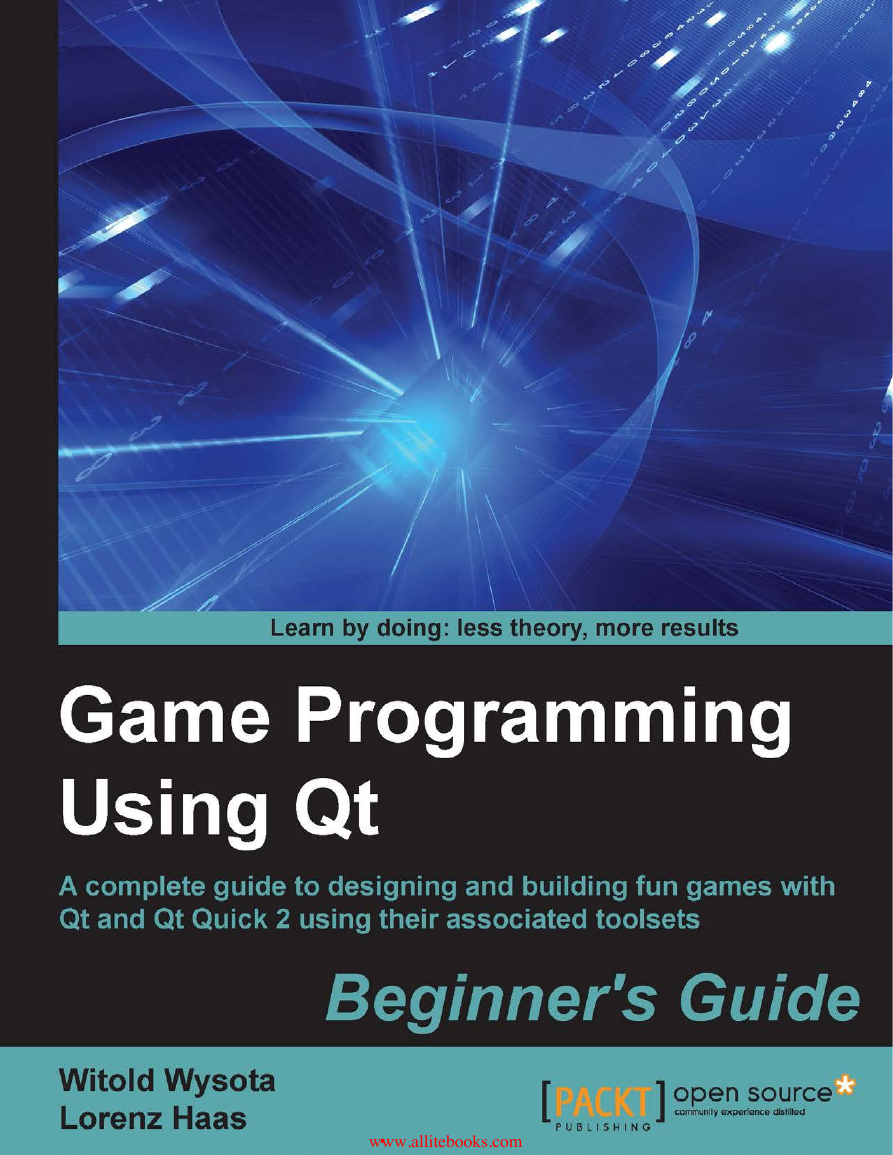
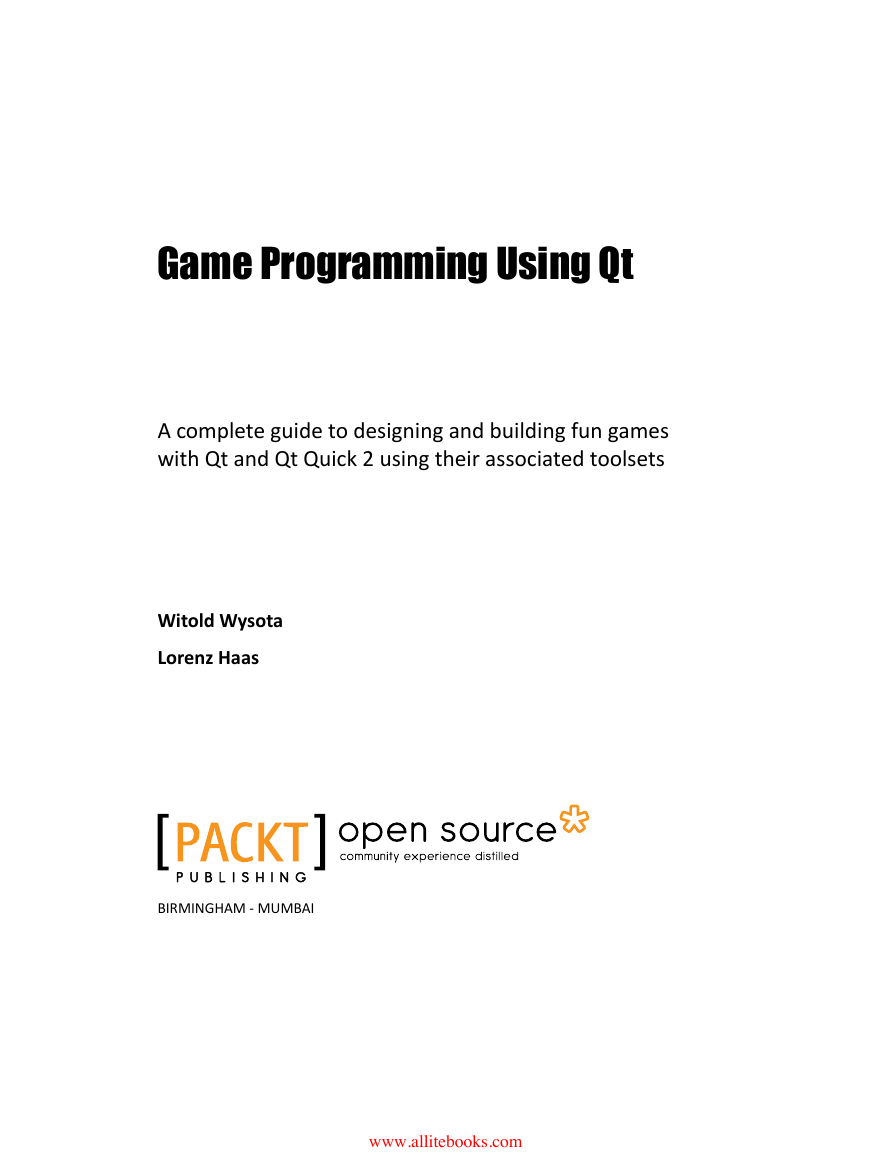
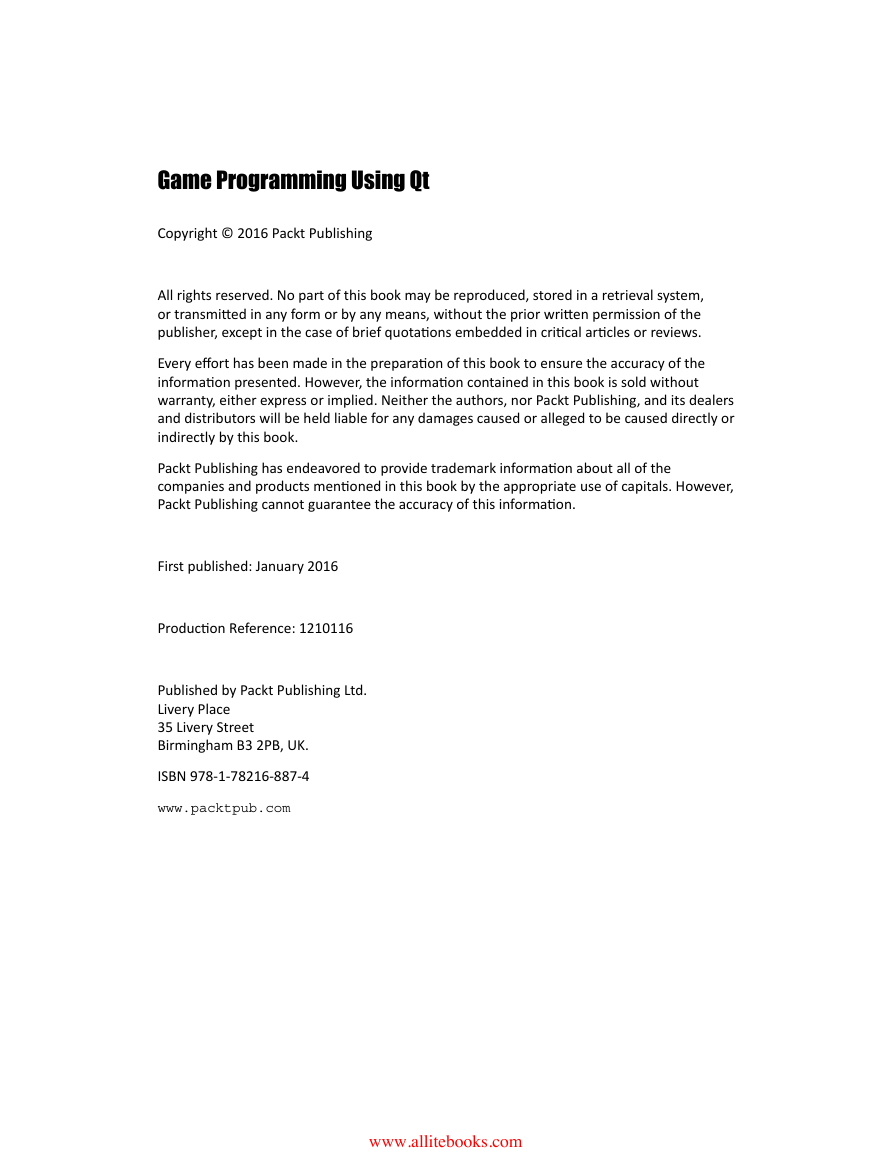
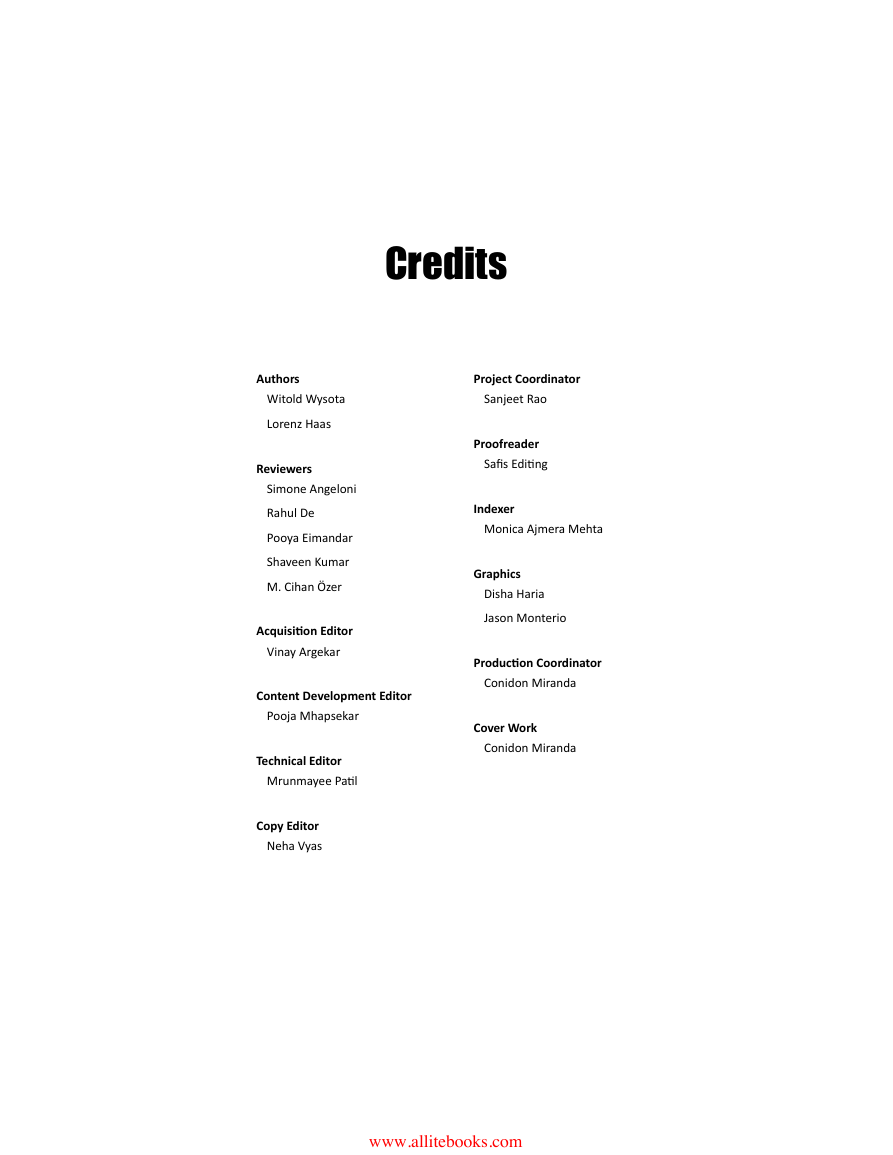
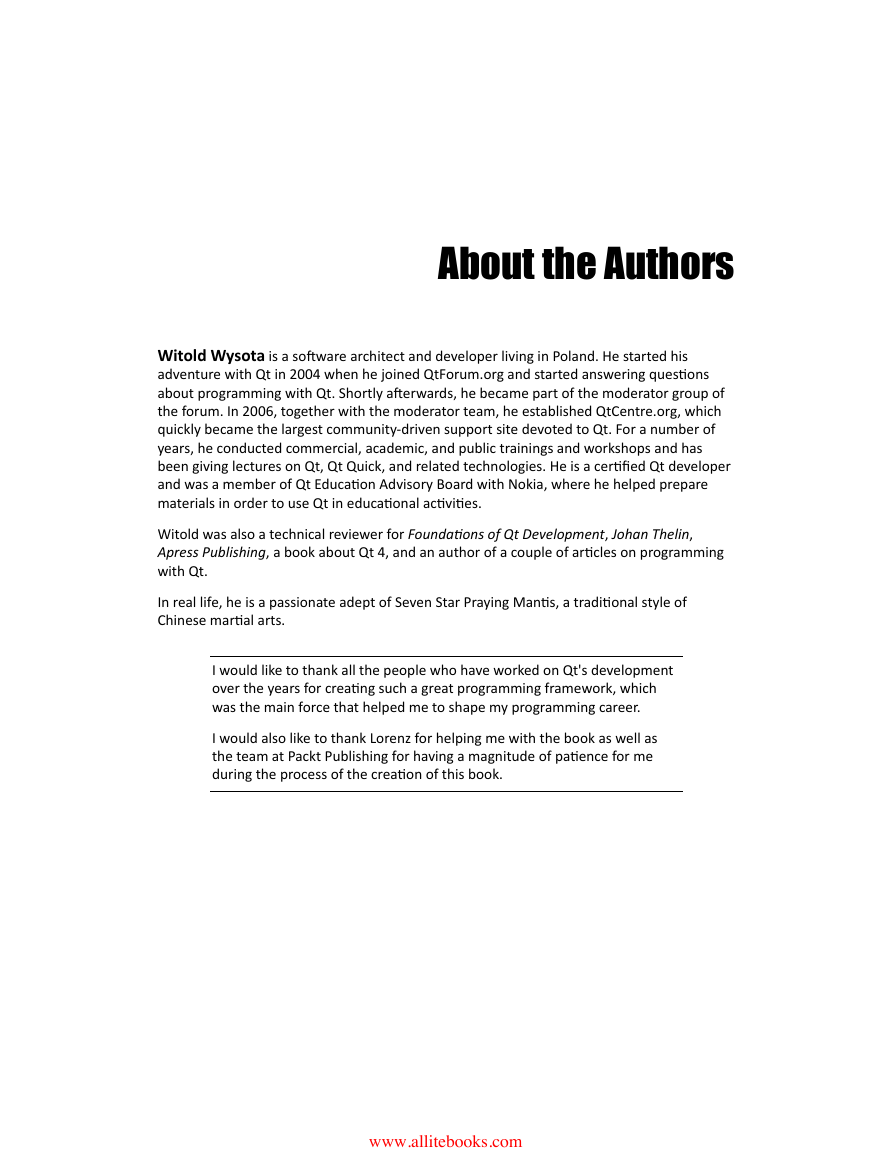











 2023年江西萍乡中考道德与法治真题及答案.doc
2023年江西萍乡中考道德与法治真题及答案.doc 2012年重庆南川中考生物真题及答案.doc
2012年重庆南川中考生物真题及答案.doc 2013年江西师范大学地理学综合及文艺理论基础考研真题.doc
2013年江西师范大学地理学综合及文艺理论基础考研真题.doc 2020年四川甘孜小升初语文真题及答案I卷.doc
2020年四川甘孜小升初语文真题及答案I卷.doc 2020年注册岩土工程师专业基础考试真题及答案.doc
2020年注册岩土工程师专业基础考试真题及答案.doc 2023-2024学年福建省厦门市九年级上学期数学月考试题及答案.doc
2023-2024学年福建省厦门市九年级上学期数学月考试题及答案.doc 2021-2022学年辽宁省沈阳市大东区九年级上学期语文期末试题及答案.doc
2021-2022学年辽宁省沈阳市大东区九年级上学期语文期末试题及答案.doc 2022-2023学年北京东城区初三第一学期物理期末试卷及答案.doc
2022-2023学年北京东城区初三第一学期物理期末试卷及答案.doc 2018上半年江西教师资格初中地理学科知识与教学能力真题及答案.doc
2018上半年江西教师资格初中地理学科知识与教学能力真题及答案.doc 2012年河北国家公务员申论考试真题及答案-省级.doc
2012年河北国家公务员申论考试真题及答案-省级.doc 2020-2021学年江苏省扬州市江都区邵樊片九年级上学期数学第一次质量检测试题及答案.doc
2020-2021学年江苏省扬州市江都区邵樊片九年级上学期数学第一次质量检测试题及答案.doc 2022下半年黑龙江教师资格证中学综合素质真题及答案.doc
2022下半年黑龙江教师资格证中学综合素质真题及答案.doc